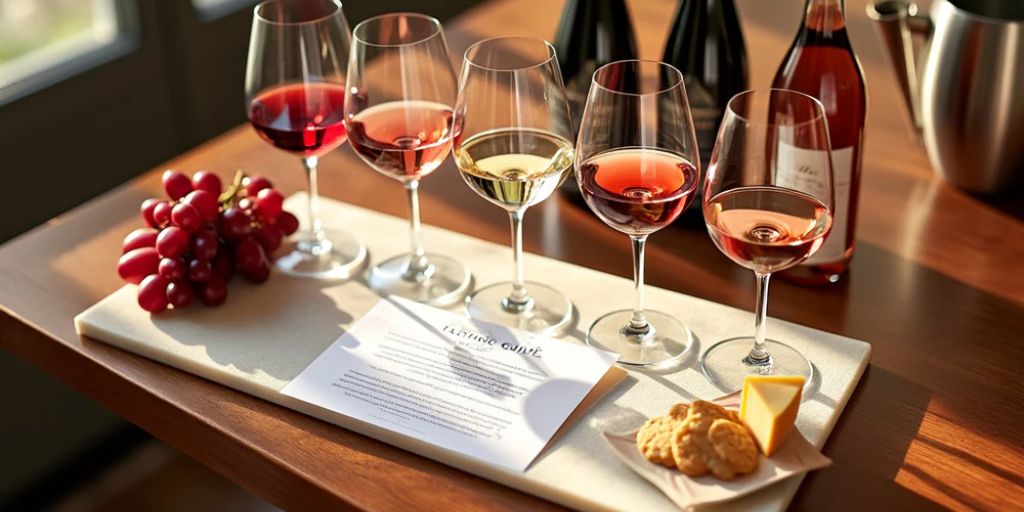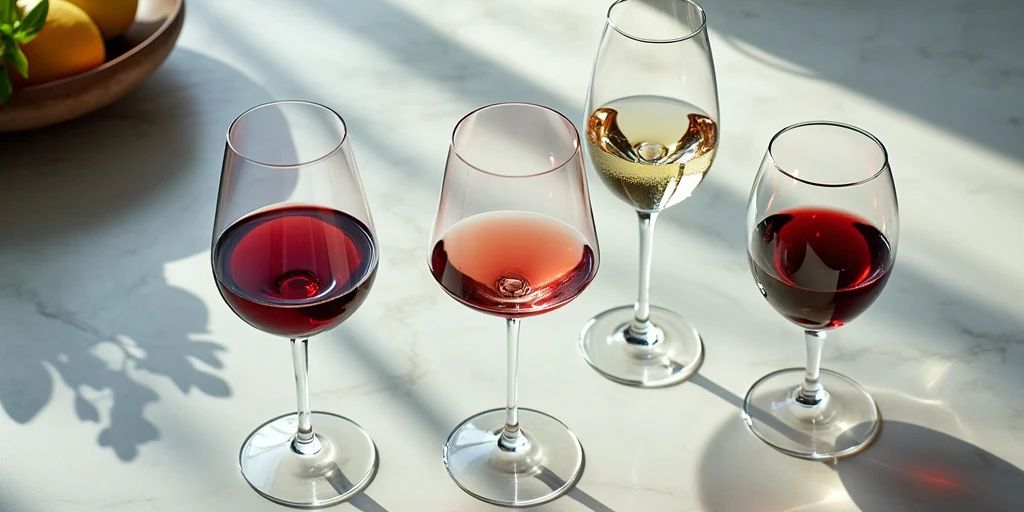Wine has long been associated with celebration, sophistication, and relaxation. But in recent years, a new trend has quietly gained momentum: non-alcoholic wine.
Whether you’re participating in Dry January, pursuing a healthier lifestyle, or simply seeking an alternative to traditional alcoholic beverages, non-alcoholic wines offer a refined option without the intoxicating effects.
This guide will explore what non-alcoholic wine is, how it’s made, who it’s for, and which bottles are worth seeking out—proving that skipping the alcohol doesn’t mean sacrificing flavor or elegance.
What is Non-Alcoholic Wine?
Non-alcoholic wine is, at its core, real wine that has undergone a process to remove most or all of its alcohol. Unlike grape juice, which is unfermented, non-alcoholic wine starts with actual wine made from fermented grapes. After fermentation, the alcohol is extracted—ideally preserving the aroma, mouthfeel, and flavor of the original product.
According to U.S. regulations, “non-alcoholic” wines may contain up to 0.5% alcohol by volume (ABV), a negligible amount similar to what’s found in kombucha or even some ripe fruits.
Why Choose Non-Alcoholic Wine?
The reasons to explore non-alcoholic wine are as varied as wine drinkers themselves. Some common motivations include:
-
Health and Wellness: Reducing alcohol consumption can benefit liver function, sleep quality, and mental clarity.
-
Pregnancy and Breastfeeding: Many people want to enjoy the ritual of wine without risking alcohol exposure.
-
Social Inclusivity: Offering non-alcoholic wine at events ensures that everyone can participate in toasts and celebrations.
-
Sober Lifestyles: Individuals recovering from alcohol dependency or simply choosing sobriety appreciate sophisticated alternatives to soft drinks.
The rise of wellness culture and mindful drinking has helped push non-alcoholic wines from niche to mainstream.
How Non-Alcoholic Wine is Made
There are three primary methods used to remove alcohol from wine:
1. Vacuum Distillation
This process heats the wine at a lower temperature under vacuum pressure, allowing the alcohol to evaporate without damaging delicate aromas and flavors.
2. Spinning Cone Column
A high-tech method that uses centrifugal force to separate the alcohol from the wine’s volatile compounds. These aromas and flavors are then reintroduced to the alcohol-free base.
3. Reverse Osmosis
Wine is filtered through a membrane to remove alcohol and water, leaving behind concentrated flavor. Water is then added back, creating a de-alcoholized product.
Each method has pros and cons, but the best producers carefully balance technology and taste to maintain the integrity of the original wine.
What to Expect From Non-Alcoholic Wine
Non-alcoholic wines tend to have certain characteristics that differentiate them from traditional wine:
-
Lighter Body: Alcohol adds weight and mouthfeel, so these wines may feel thinner on the palate.
-
Brighter Acidity: Especially in whites and sparkling styles.
-
Less Complexity: While technology is improving, some nuance is often lost in the de-alcoholization process.
-
Fewer Calories: Many non-alcoholic wines contain less sugar and fewer calories than regular wines.
Despite these differences, quality non-alcoholic wines can closely mimic their alcoholic counterparts—particularly sparkling wines and lighter varietals.
Best Types of Non-Alcoholic Wine to Try
1. Sparkling Wines
Non-alcoholic sparkling wines are among the most successful alternatives. The carbonation masks some of the body and flavor differences that come from alcohol removal.
-
Try:
-
Thomson & Scott Noughty Sparkling Chardonnay – Crisp and dry, with notes of green apple and lemon zest.
-
Pierre Chavin Perle Rosé – Elegant pink bubbles with subtle berry flavors.
-
2. White Wines
Dry whites fare better than heavy or oaked styles. Look for Sauvignon Blanc or Riesling-based wines with fresh acidity.
-
Try:
-
Leitz Eins Zwei Zero Riesling – Balanced sweetness and acidity, with aromas of citrus and stone fruit.
-
Giesen 0% Sauvignon Blanc – Bright, grassy, and well-structured.
-
3. Rosé Wines
Rosé is refreshing by nature, and non-alcoholic versions often retain its fruity character without being too sweet.
-
Try:
-
Surely Non-Alcoholic Rosé – California-based producer with crisp notes of strawberries and rose petals.
-
Fre Rosé – Accessible and widely available, with soft berry flavors.
-
4. Red Wines
Non-alcoholic reds are the most challenging to perfect, as body and tannins are closely tied to alcohol content. However, some brands are making strides with lighter styles like Pinot Noir.
-
Try:
-
Leitz Zero Point Five Pinot Noir – Light-bodied, fruity, and pleasantly earthy.
-
Oddbird GSM Red – A complex blend of Grenache, Syrah, and Mourvèdre from France with some depth.
-
Top Brands Specializing in Non-Alcoholic Wine
If you’re new to this world, these brands are leading the way:

-
Leitz (Germany) – Known for aromatic Rieslings and balanced Pinot Noir.
-
Thomson & Scott (UK) – Vegan, organic, and focused on low-sugar sparkling wines.
-
Surely (USA) – California-based and targeting a younger, wellness-minded audience.
-
Fre (USA) – One of the most established non-alcoholic wine producers, available at many supermarkets.
-
Giesen (New Zealand) – A respected winery offering zero-alcohol Sauvignon Blanc and Rosé.
-
Oddbird (Sweden/France) – Minimalist and premium non-alcoholic wines aged in barrels before de-alcoholization.
How to Serve and Enjoy Non-Alcoholic Wine
To get the best experience:
-
Serve at the Right Temperature: Sparkling and whites should be well chilled. Reds are best slightly cool.
-
Use Proper Glassware: Treat it like traditional wine. Aroma and presentation matter.
-
Pair With Food: Non-alcoholic wines pair well with cheeses, appetizers, seafood, and light meats—just like regular wine.
-
Experiment With Mixology: Use them as a base for mocktails or spritzes for creative, alcohol-free options.
Where to Buy Non-Alcoholic Wine
-
Online Retailers: Sites like Boisson, Better Rhodes, Dry Drinker, and Amazon offer a wide variety with reviews and bundles.
-
Specialty Grocery Stores: Whole Foods, Trader Joe’s, and some local markets carry select brands.
-
Wine Shops: More independent wine shops are starting to include non-alcoholic selections, especially in wellness-focused areas.
Tips for First-Time Buyers
-
Start with Sparkling: Easier to enjoy, and the effervescence helps replicate the celebratory experience.
-
Read Reviews: Not all non-alcoholic wines are created equal. Community feedback can save you money and time.
-
Keep an Open Mind: You’re not going to replicate a bold Napa Cabernet, but you may discover a refreshing new favorite.
-
Try Sampler Packs: Many brands offer discovery sets so you can taste and compare.
Final Thoughts
Non-alcoholic wine is no longer a novelty or compromise—it’s a thoughtful lifestyle choice embraced by wine lovers, wellness enthusiasts, and social drinkers alike.
Thanks to advances in winemaking technology and a growing demand for inclusivity, you can now sip, swirl, and savor a glass of wine that fits your preferences without sacrificing the experience.
Whether you’re looking to cut back, celebrate with friends who don’t drink, or simply explore a new corner of the wine world, non-alcoholic wines are well worth a pour.
Here’s to good taste—on your terms.


